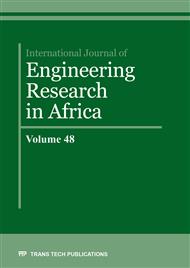p.63
p.78
p.92
p.108
p.126
p.133
p.149
p.162
p.179
Digimesh-Based Design of a Wireless Monitoring Network for Environmental Factors Affecting Granary System
Abstract:
The monitoring of granaries were earlier implemented with wired networks in most Asia countries with obvious challenges that include high installation and maintenance costs, data acquisition delay, and high energy consumption. Most other works being implemented with wireless approaches presented inherent drawbacks that include inefficient coverage of the grain storage bins and high rate of node failure. This paper presents the design and tremendous advantages of deploying distributed wireless sensor network based on Digimesh network protocol, to monitor the environmental temperature, humidity and illumination of a granary system. The monitoring system has only one node type, and consists of a homogenous network in which all nodes route data and they are interchangeable. A node consists of Xbee transceiver modules, Arduino microcontroller and DHT22 Temperature/Humidity sensor, and it is being configured as low battery powered devices. The results were logged real-time on a personal computer for analysis, display and record. The results indicate a system which provides a better sleeping scheme and eliminate the single point of failure associated with Zigbee and some other network protocols.
Info:
Periodical:
Pages:
126-132
Citation:
Online since:
May 2020
Keywords:
Price:
Сopyright:
© 2020 Trans Tech Publications Ltd. All Rights Reserved
Share:
Citation:


